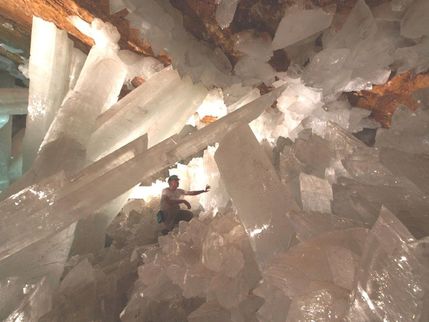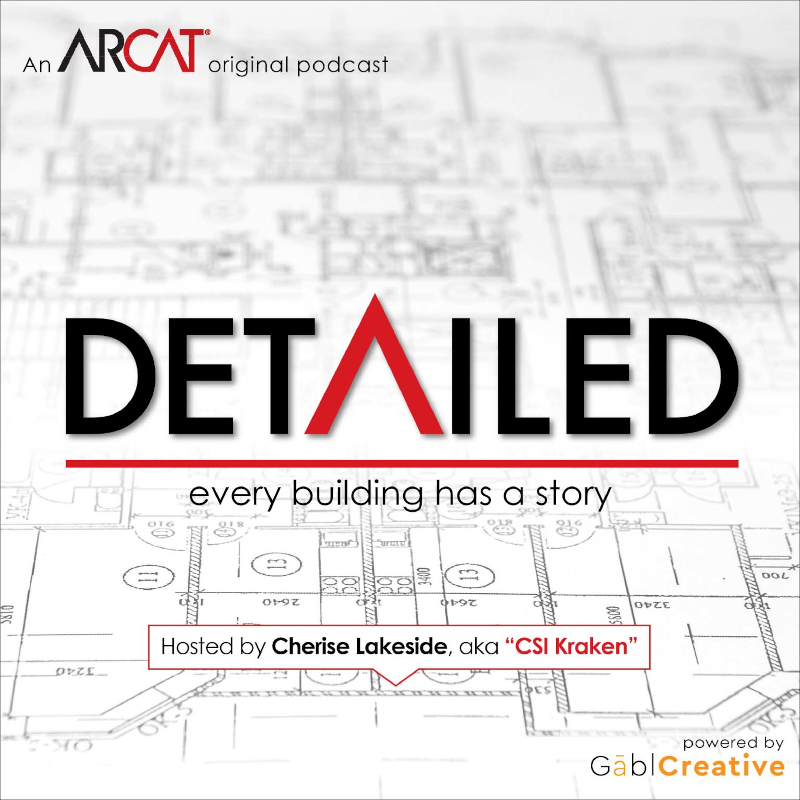|
Contributed by Elias Saltz As a consulting specifier, my clients come to me for my expertise, and to bolster my knowledge I frequently find myself in conversations with product reps, talking about the nitty-gritty technical aspects of their products. These conversations delve into a far deeper level of detail than I would previously get when I was a ‘normal’ design architect and project manager. Over the course of those conversations, I am occasionally surprised that things I thought I knew a lot about were based on misconceptions. In fact, even things that I considered “common knowledge” have been shown to be wrong, or at least over-simplifications. Armed with accurate information, I can pass correct technical advice on to my clients, hopefully dispelling those misconceptions one person at a time, one project at a time. Which leads me to the idea for this series of posts. Misconceptions can be found across the spectrum, in every product category and in every MasterFormat number. I thought it would be fun and enlightening to ask my go-to reps in a wide variety of product categories to tell me the biggest and most common misconceptions they hear as they work with designers and architects, and present their responses here. In each post I’ll relate my discussion with reps in one category or one MasterFormat header. So without any further ado, today’s Misconceptions. The reps I chose to approach for this post, Andy Vegter from USG and Thad Goodman from National Gypsum, are both active and involved CSI members that I’ve come to know well over my career. I consider them my trusted advisors when it comes to questions about their companies’ lines of gypsum-based products. I’m not promoting their products over their competitors’ - it’s far more about the individual reps than the companies that they work for. Without any further ado, today’s Misconceptions. 09 29 00 - Gypsum Board I asked Andy and Thad this question: “When you think about the questions and comments you hear from design professionals across all levels of experience, what misconceptions about gypsum products do you find that you most commonly have to dispel?” First, this brief introduction - What is gypsum/gypsum board, anyway?” Gypsum is a natural mineral, chemically made up of calcium and sulfur bound to oxygen and water. It is found naturally in sedimentary rock formations, with some of the world’s largest natural reserves in North America. A synthetic version, which is a byproduct of coal burning electric power plants, is chemically identical to natural gypsum. Some gypsum board manufacturing plants are fed with mostly synthetic gypsums and others are built over a mine where the gypsum is coming out of the ground. Synthetic gypsum is considered a recycled material by sustainability rating systems, so projects seeking certification can specify that gypsum panels be made up of 90% recycled content. It’s important to remember that not all products are available from plants that use synthetic gypsum. Gypsum board is manufactured when gypsum is mixed with water and additives to form a slurry which is then fed between continuous layers of paper or another type of facer. Through a chemical process, the slurry hardens to its original rock state, and the facer becomes bonded to the gypsum core. The boards are then cut to size and dried. What follows are some of the most frequent misconceptions and misunderstandings that the reps related, followed by the correct information. “Type X Gypsum Board is Fire Rated.”
Gypsum board by itself has no fire rating. Ratings are conferred by testing agencies on full assemblies, which include everything that goes into the construction of that assembly: gypsum panels, studs, insulation, resilient channels, etc. While it is not fire rated, a single layer of drywall acts as a thermal barrier, protecting concealed foam plastics from ignition in a fire for a period of fifteen minutes, as required by model codes. “Mold-resistant gypsum board is mold proof.” In reality, nothing is mold proof. Mold spores are everywhere, and they just need a food source and moisture in order to grow. Mold-resistant gypsum board products have paper faces that are treated to retard mold growth, but the best and most cost-effective strategy to manage the risk of mold is to prevent the intrusion of water into the building and to encourage wet materials to dry rapidly. In addition to mold-resistant paper-faced gypsum board, which is recommended for use in conditions where incidental moisture is present, there are glass mat-faced products that are tolerant of direct water and prolonged humidity. “The STC ratings on standard details are what I’ll get.” STC testing is done in a perfect lab environment on a wall with no penetrations or places where sound flanking can occur. In the real world, sound flanking can occur with electrical boxes, lack of acoustical sealant at the base or top of the wall, and around doors and windows. Expect an STC performance loss of at least five points compared to the STC tested result in the lab. “Type X Drywall can be used in all fire-rated assemblies” Most rated gypsum ceiling assemblies require Type C, but Type X is frequently used and accepted by mistake. Type X does not match the fire performance of Type C. As a rule of thumb, remember “C” for “Ceiling” when the ceiling is part of the fire rated assembly, but read the tested design requirements carefully because there might be exceptions to that rule. “I won’t have cracks in my wall as long as I follow the 30 foot spacing rule for control joints.” In reality, control joints reduce the risk of cracking, but do not eliminate it. The amount of movement anticipated is what should dictate control spacing and placement. Installation specifications and a guide for spacing control joints is described in ASTM C 840, “Standard Specification for Application and Finishing of Gypsum Board.” Also, cracking can occur if deflection from structure above the top of a wall is not accommodated in the wall assembly. Gypsum board and stud manufacturers have numerous recommended methods for taking up the deflection. “Level 5 Drywall will be perfectly smooth” The levels of gypsum board finishing is very confusing and mostly overlooked until there’s a problem. The five levels of finish were developed by a collaboration of the manufacturers and associations within the paint and gypsum industries as a way to manage the expectations of the appearance a finished wall by the architect and owner. They are described in ASTM C 840, which is based on Gypsum Association’s document GA-214-15. All walls have blemishes and imperfections that can be exaggerated by critical light, glossy paints, quality of framing, quality of finishing, quality of drywall primer, and workmanship. GA-214-15 includes mock-up walls giving you an opportunity to set expectations and receive Owner acceptance before the work is complete. Conclusion No building material is free of complicated qualifications regarding its use. Architects and specifiers often collapse these qualifications into rules of thumb that they use when they generate designs and specifications. Many of these rules of thumb are generally useful but when you dig deeper, they are often based on obsolete or incorrect information. Experienced product reps have seen and helped solve many real-life problems that have arisen through incorrect product selection, bad detailing and poor specifications. They are a critical resource that can help us update our knowledge and dispel our misconceptions. My thanks to Andy and Thad for participating in this project.
10 Comments
George Everding
5/30/2017 05:38:13 pm
The reason Type C and Type X gypsum boards perform differently during a fire relates to the composition of the product. In the manufacturing process of gypsum boards, crystallized water becomes chemically bonded within the gypsum. As fire begins to affect gypsum board in a wall assembly, the temperature of the product is raised in a linear fashion until the water within the product turns from a solid component directly into a vapor, at which point a tremendous amount of heat energy is required to achieve the change in state. In fact if you are able to witness the ASTM E-119 test of a gypsum assembly, you probably will be able to see steam being released from the product on the non-fire side of the test.
Reply
Elias Saltz
5/31/2017 04:07:43 pm
@George - that's the challenge with this project - trying to provide relevant information without going overboard and writing a book-length treatise for every topic. However, I do like the idea of having other people - either specifiers or reps - augment the posts with more in-depth information about some aspect of what I posted. Thanks for your response.
Reply
11/25/2017 06:42:48 pm
Wow, even after working with drywall for years and years I didn't know a lot of the information in this blog post. Its funny how you can get caught up in the things you know and stop learning more. Great job informing and educating us about the misconceptions of gypsum board. We at Nashuadrywall.com appreciate you helping us better serve our local customer base :)
Reply
11/27/2017 03:56:07 pm
Thank you very much for stopping by, reading our post, and leaving such a positive comment, Nashua Drywall. THIS is exactly what our website is all about.
Reply
9/30/2019 02:11:48 pm
as a drywall expert i can say this is great information
Reply
First of all thank you so much Elias for educating us about Gypsum board. Well explained and cleared misconceptions about Gypsum board. Just one question for you, as you mentioned Gypsum board has no fire rating, It means we can consider it as a fireproof board?
Reply
Elias Saltz
6/23/2020 11:12:55 am
I don't understand the gist of this question. What application are you trying to fireproof?
Reply
11/6/2020 09:15:40 pm
Very nice and informative article! We 're started doing drywall construction and I've learned great things after reading! Thank you
Reply
9/24/2021 03:02:50 pm
According to Value Market Research, the latest technology trends and global market opportunity analysis in the Gypsum Board Market industry growing with a high CAGR in the upcoming year. Our report has categorized the market based on technology, service, development, vertical and region. https://www.valuemarketresearch.com/report/gypsum-board-market
Reply
4/4/2022 01:28:07 am
Great blog with very useful knowledge. It is important to understand the different types of gypsum board and how to use them before starting a project. Gypsum board installation is a professional process that should be handled by a qualified installer. By following the proper installation procedures, you can ensure a long-lasting and durable wall system. Keep sharing articles like this.
Reply
Leave a Reply. |
AboutLet's Fix Construction is an avenue to offer creative solutions, separate myths from facts and erase misconceptions about the architecture, engineering and construction (AEC) industry. Check out Cherise's latest podcast
Get blog post notifications hereArchives
March 2022
Categories
All
|


 RSS Feed
RSS Feed
